MARIANI’S
Virtual Gourmet
March
8, 2020
NEWSLETTER
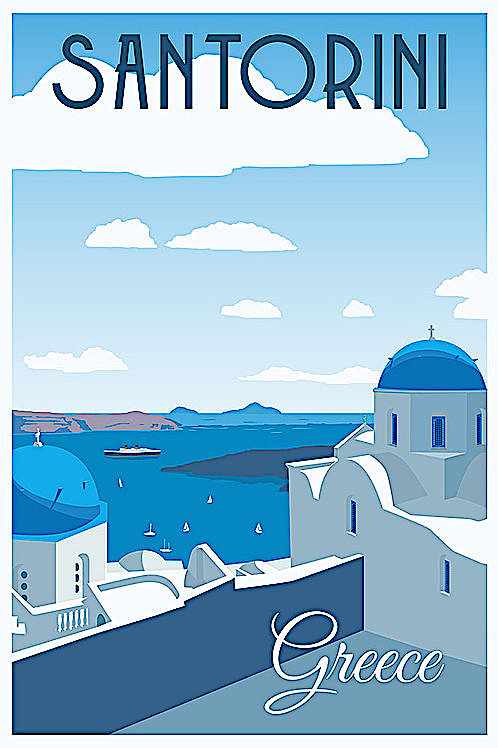
❖❖❖
IN THIS ISSUE
EATING AROUND TAMPA
By Geoff Kalish
NEW YORK CORNER
GNOCCO
By John Mariani
NOTES FROM THE WINE CELLAR
GOOD NEWS FROM CHIANTI CLASSICO
By John Mariani
❖❖❖
EATING
AROUND
TAMPA
By Geoff Kalish
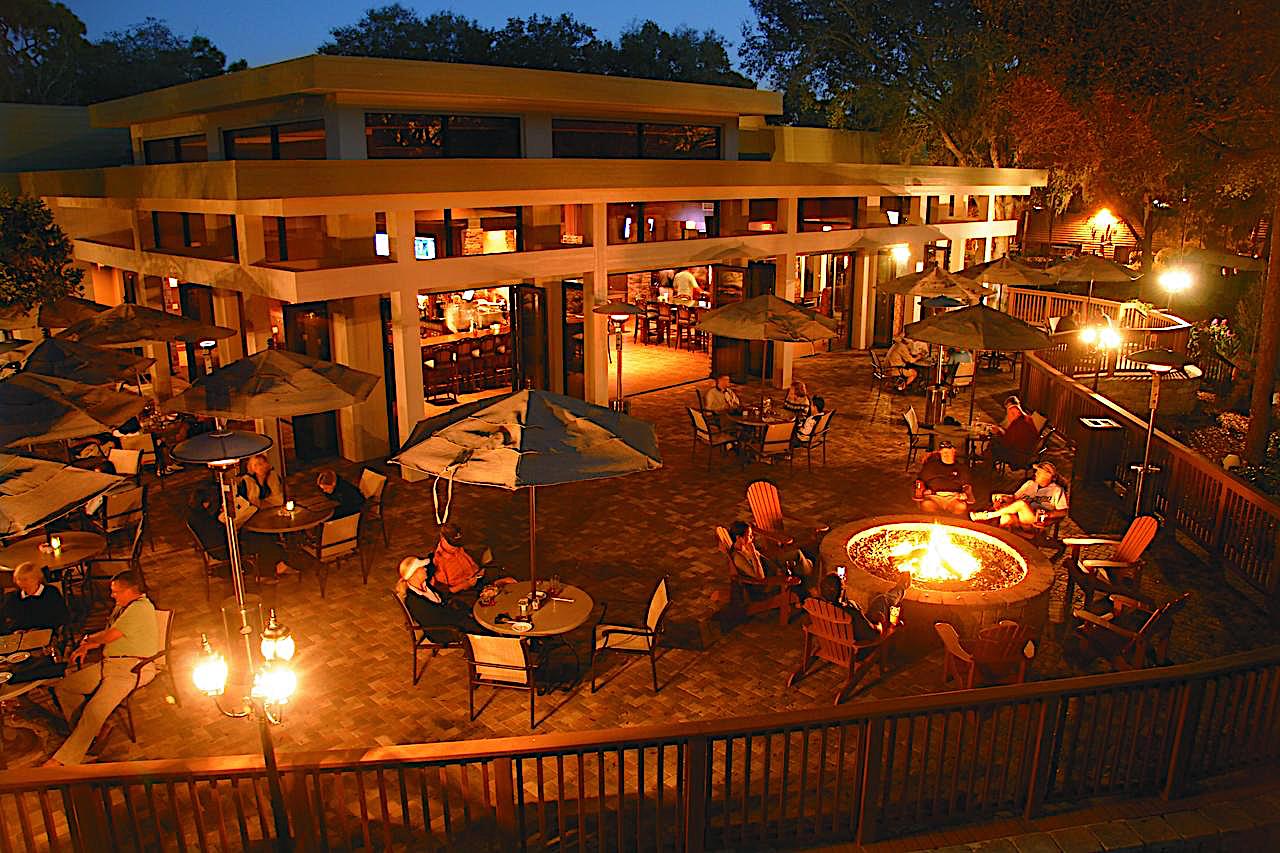
Innisbrook Resort
 At the recently
refurbished Innisbrook
Resort
(www.innisbrookresort.com) in Palm Harbor, situated
along the Gulf of Mexico
just north of Clearwater, nightly winter rates for
condo units start at $250,
with a number of golf packages available. The resort
also features a range of
dining options, a fitness center, six individual
heated swimming pools and a
state-of-the-art spa, featuring treatments ranging
from manicures and pedicures
to a variety of facials and whole body massages with
lime and ginger salt.
At the recently
refurbished Innisbrook
Resort
(www.innisbrookresort.com) in Palm Harbor, situated
along the Gulf of Mexico
just north of Clearwater, nightly winter rates for
condo units start at $250,
with a number of golf packages available. The resort
also features a range of
dining options, a fitness center, six individual
heated swimming pools and a
state-of-the-art spa, featuring treatments ranging
from manicures and pedicures
to a variety of facials and whole body massages with
lime and ginger salt.As for golf, it’s available on the spectacular Copperhead (left) course, which hosts the PGA Tour’s Valspar Tournament (this year March 18-22), as well as three other well-groomed courses ranging in difficulty from the links-like South course to the North course, which offers a mix of narrow tree-lined fairways and wide, water-protected holes, to the “water, water everywhere,” very challenging, Island course.
There’s the availability of breakfast and lunch at each of three golf clubhouses, with nightly casual dinner at The Market Salamander
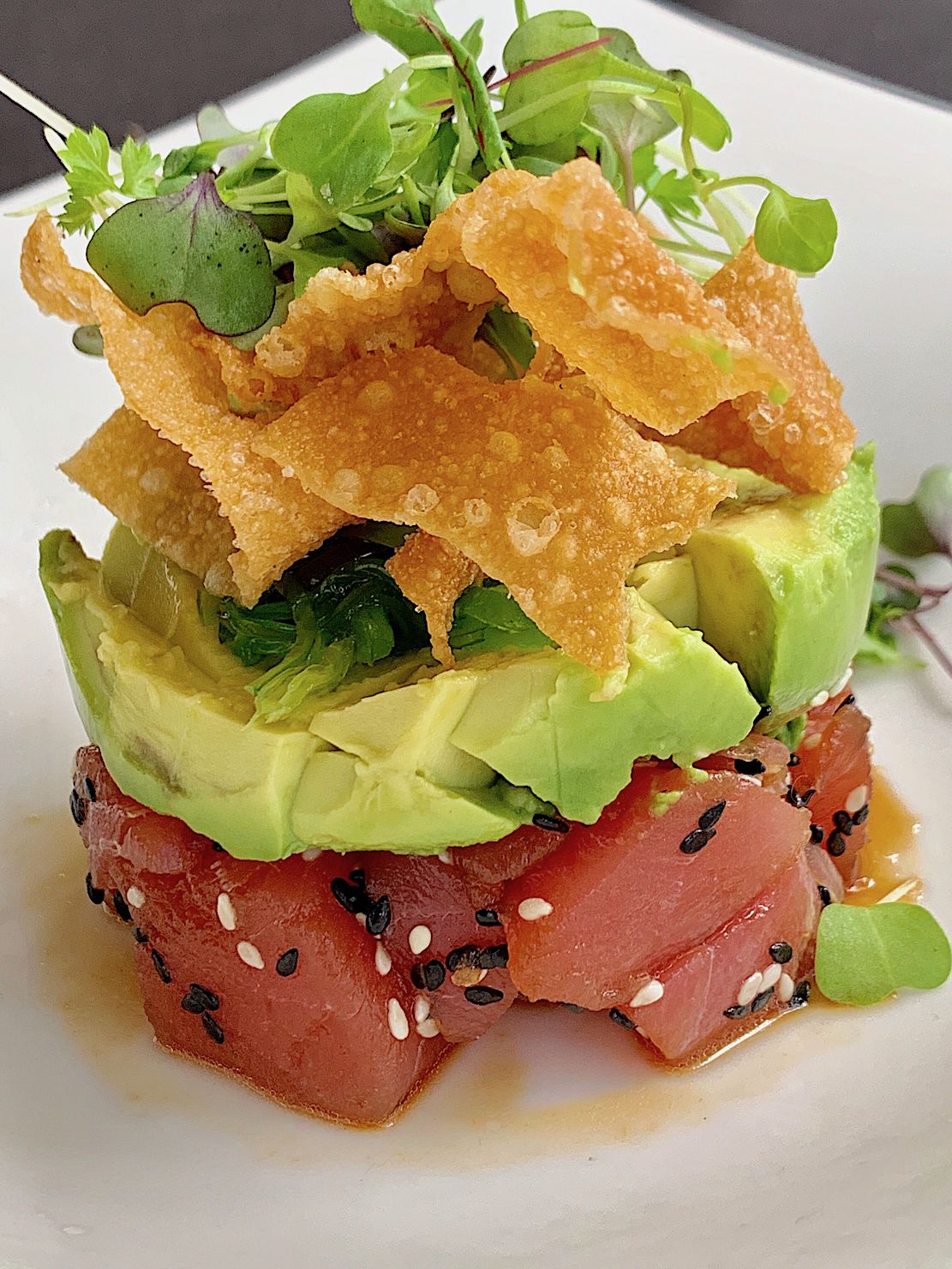 Inn
offering an array of salads, soups
and flatbreads, including one loaded with mozzarella
and mushrooms and doused
in a mix of balsamic and fragrant truffle oil,
flatbreads and small plates like
meaty ribs with mango slaw, a dewy fresh ahi tuna
poke bowl (right)
and wings coated in
a tangy “Calypso” BBQ sauce. Two excellent main
courses tried were the tasty
blackened grouper and a thick pork chop that was
crunchy on the outside and
moist inside, accompanied by a heady Granny Smith
apple chutney. For dessert we
shared a decadent Ghirardelli chocolate brownie with
coffee ice cream and
chocolate sauce.
Inn
offering an array of salads, soups
and flatbreads, including one loaded with mozzarella
and mushrooms and doused
in a mix of balsamic and fragrant truffle oil,
flatbreads and small plates like
meaty ribs with mango slaw, a dewy fresh ahi tuna
poke bowl (right)
and wings coated in
a tangy “Calypso” BBQ sauce. Two excellent main
courses tried were the tasty
blackened grouper and a thick pork chop that was
crunchy on the outside and
moist inside, accompanied by a heady Granny Smith
apple chutney. For dessert we
shared a decadent Ghirardelli chocolate brownie with
coffee ice cream and
chocolate sauce.There’s a good choice of wines, like the Faustino VII, with a bouquet and taste of ripe berries, we’d chosen to accompany our dinner, as well as a long list of spirits, featuring locally made whiskey. (Expect dinner for two to cost $90-$100, excluding wine, tax and tip.)
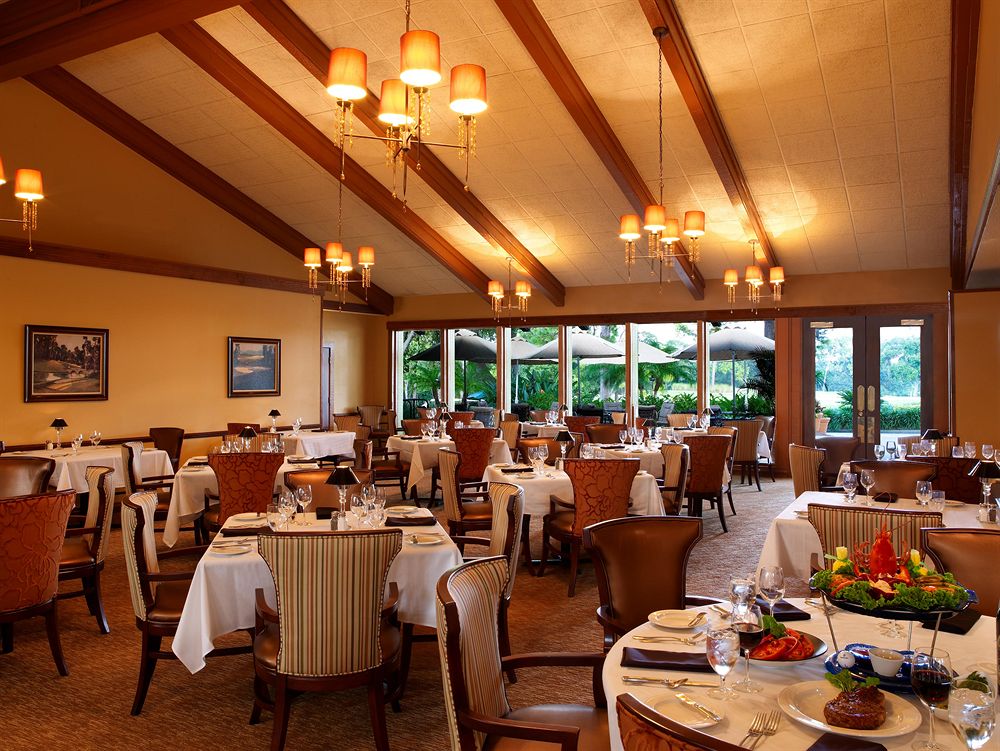 And there’s Packard’s Steakhouse (left), which
gives Tampa’s Bern’s Steak House a run
for the money in quality of fare and service. In
particular at Packard’s we
enjoyed appetizers of grilled lollipop lamb chops
drizzled with white truffle
oil and a tuna poke bowl with a tasty yuzu citrus
marinade, then both the filet
mignon and NY prime strip steaks (cooked exactly to
our specifications), both
of which had robust beefy flavor that mated well
with a Robert Hall Syrah,
which had a bouquet and flavor of just-picked
blueberries with a touch of
tannin in its finish. The experience provided by
Packard’s service from two
very caring, yet professional and knowledgeable
servers, each with over 30
years at the restaurant was a cut above the rather
formalistic Bern’s
experience. (Open
daily. Dinner runs
$140-$150, excluding wine, tax and tip.)
And there’s Packard’s Steakhouse (left), which
gives Tampa’s Bern’s Steak House a run
for the money in quality of fare and service. In
particular at Packard’s we
enjoyed appetizers of grilled lollipop lamb chops
drizzled with white truffle
oil and a tuna poke bowl with a tasty yuzu citrus
marinade, then both the filet
mignon and NY prime strip steaks (cooked exactly to
our specifications), both
of which had robust beefy flavor that mated well
with a Robert Hall Syrah,
which had a bouquet and flavor of just-picked
blueberries with a touch of
tannin in its finish. The experience provided by
Packard’s service from two
very caring, yet professional and knowledgeable
servers, each with over 30
years at the restaurant was a cut above the rather
formalistic Bern’s
experience. (Open
daily. Dinner runs
$140-$150, excluding wine, tax and tip.)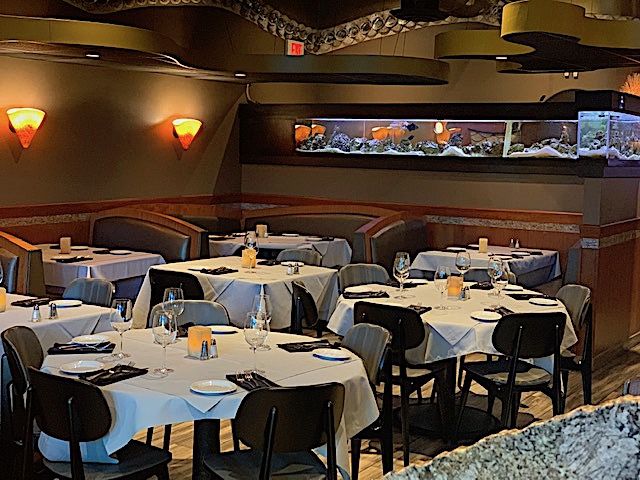
For those who want to venture outside the resort, there’s the nearby, very popular Mystic Fish (3253 Tampa Rd in Palm Harbor; 727-771-1800) a storefront eatery with an eclectic nautically themed interior featuring a row of tropical fish tanks (right) separating the two dining areas. Served are perfectly prepared small plates like spice-rubbed, grilled Gulf shrimp atop a roasted sweet onion aïoli. Grilled octopus accompanied by feta and kalamata olives, and rare ahi tuna with ponzu sauce were also fine choices as apps. As for main courses, they run the gamut from seafare preparations like delicate, bronzed (slightly blackened) Chilean sea bass and flaky, sweet panko-crusted hog fish, to a range of chops, ribs and lamb dishes for the carnivorous crowd, all served with a vegetable and choice of potato or rice. Moreover, there’s a good choice of desserts like a rich white chocolate bread pudding as well as a sensibly priced wine list with gems like the elegant, toasty Jordan Chardonnay. (Open daily for dinner. Expect a meal for two to cost $100-$110, excluding wine, tax and tip.)
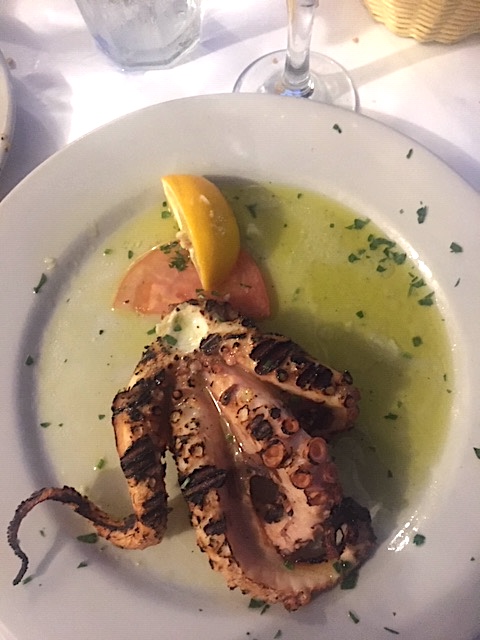 Other
notable relatively nearby dining spots
include: Dimitri’s
On The Water (690 Dodecanese
Blvd.;727-945-9400) in
Tarpon Springs overlooking the Sponge Dock harbor,
which serves huge portions
of toothsome Greek-inspired dishes like grilled
octopus (left)
and Gulf grouper to
rack and leg of lamb, all served with a choice of
vegetable and starch. Also,
as expected, there’s a spectrum of classic
honey-laced Greek desserts
available. (Open daily. Expect dinner for two to cost
a very reasonable $80-$90,
excluding wine, tax and tip.)
Other
notable relatively nearby dining spots
include: Dimitri’s
On The Water (690 Dodecanese
Blvd.;727-945-9400) in
Tarpon Springs overlooking the Sponge Dock harbor,
which serves huge portions
of toothsome Greek-inspired dishes like grilled
octopus (left)
and Gulf grouper to
rack and leg of lamb, all served with a choice of
vegetable and starch. Also,
as expected, there’s a spectrum of classic
honey-laced Greek desserts
available. (Open daily. Expect dinner for two to cost
a very reasonable $80-$90,
excluding wine, tax and tip.) Tarpon Turtle (1513 Lake Tarpon Ave.; 727-940-5360), a casual lakeside spot (below) with
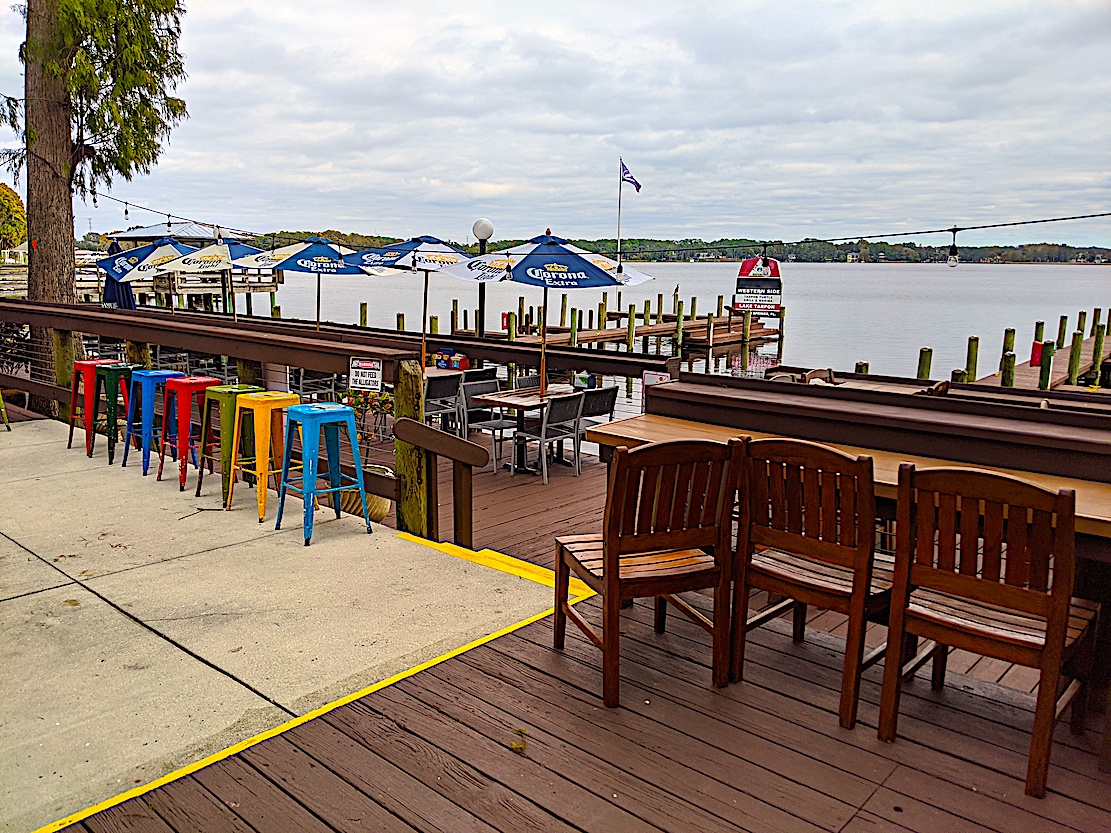 excellent
service overseen by
affable manager Mike Hodges, features well made,
very generous portions of
appetizers like tempura-battered calamari strips and
pulled pork flatbread, as
well as main courses of mahi tacos, grilled grouper
and a range of burgers. And
for dessert we enjoyed a rich, flavorful homemade
Key lime pie. (Open
daily for lunch and dinner. Expect
dinner for two to cost $70-$80, not including
wine, tax or tip.)
excellent
service overseen by
affable manager Mike Hodges, features well made,
very generous portions of
appetizers like tempura-battered calamari strips and
pulled pork flatbread, as
well as main courses of mahi tacos, grilled grouper
and a range of burgers. And
for dessert we enjoyed a rich, flavorful homemade
Key lime pie. (Open
daily for lunch and dinner. Expect
dinner for two to cost $70-$80, not including
wine, tax or tip.)And for some diversions while in the area there’s Aspirations Winery (22041 US Hwy 19 N, Clearwater 727 -799-9463, open Wed.-Sun.) with a lively tasting area; the Leepa-Rattner Museum of Art (600 Klosterman Rd, Tarpon Springs 727-712-5762, open Thurs.–Sun.) that features work of modernist artist (and Picasso friend) Abraham Rattner, and the Clearwater Marine Aquarium (249 Windward Passage, Clearwater, open daily ) that also serves as a rescue and rehab facility for injured dolphins, rays and sea turtles and allows visitors to see (and feed) dolphins up close, with fascinating hour-long tours of the behind-the scenes activities given a few times daily.
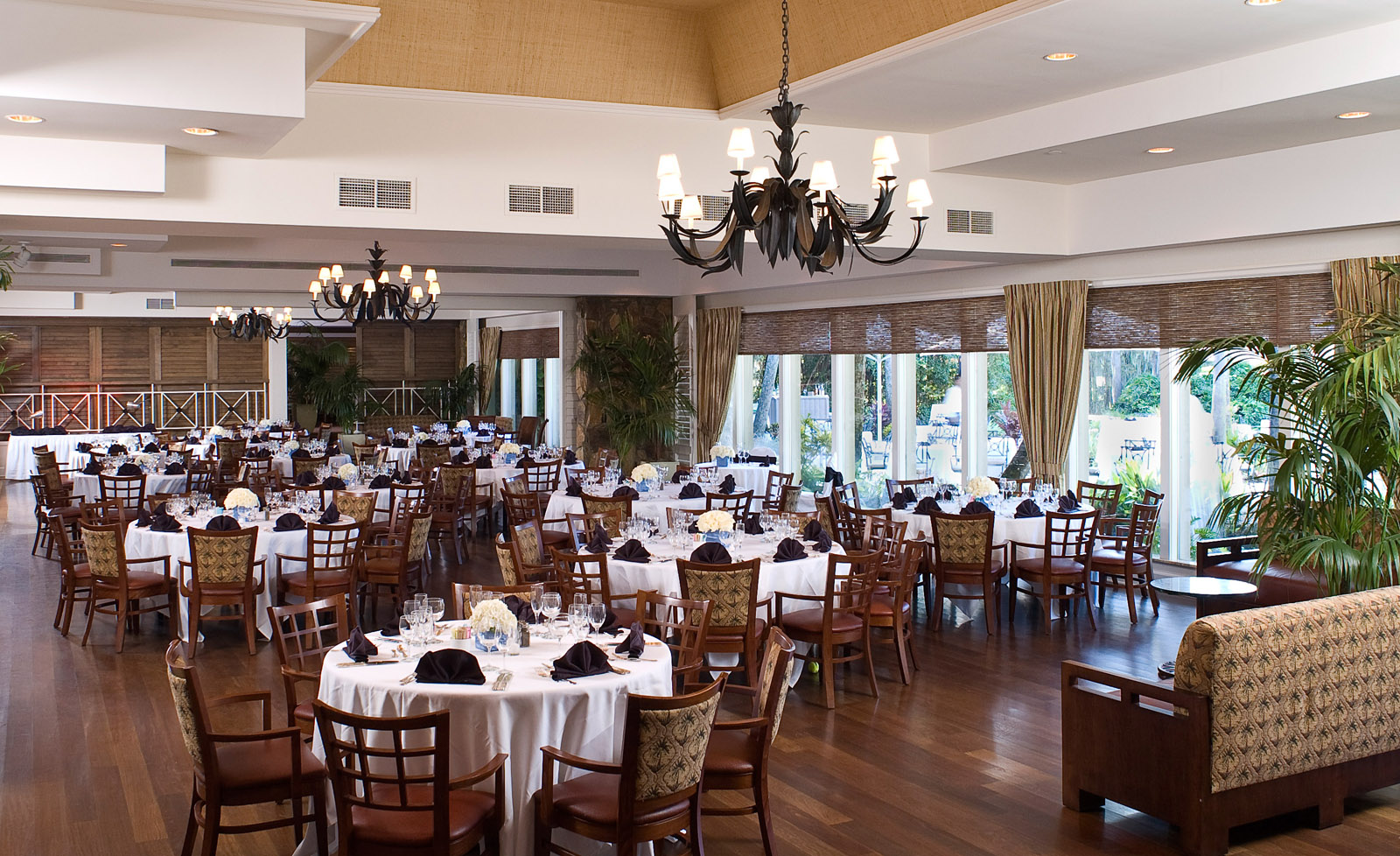 At the more
compact Saddlebrook Resort
(www.saddlebrook.com) in Wesley Chapel (a
30-minute car ride northeast of Tampa) condo units
are available in winter from
$250 per night, with some well priced golf and
dining packages available. The
resort features swimming in a centrally located area
with multiple pools
(heated, of course), a spa and fitness center, with
daily breakfast, lunch and
casual evening dining in the clubhouse at TD’s
Sports Bar, featuring a
range of cut-above-the-average pub fare, like a tuna
poke bowl, slow-braised,
flavorful short ribs and a tasty pulled pork entrée.
And, there’s more upscale
fare available at Dempsy’s
(also
in the clubhouse), where the offerings range from
appetizers of seared, dewy
diver’s scallops and jumbo lump crab cakes on a lime
emulsion and topped with a
yellow tomato salsa, to baked oysters and a wild
shrimp cocktail.
At the more
compact Saddlebrook Resort
(www.saddlebrook.com) in Wesley Chapel (a
30-minute car ride northeast of Tampa) condo units
are available in winter from
$250 per night, with some well priced golf and
dining packages available. The
resort features swimming in a centrally located area
with multiple pools
(heated, of course), a spa and fitness center, with
daily breakfast, lunch and
casual evening dining in the clubhouse at TD’s
Sports Bar, featuring a
range of cut-above-the-average pub fare, like a tuna
poke bowl, slow-braised,
flavorful short ribs and a tasty pulled pork entrée.
And, there’s more upscale
fare available at Dempsy’s
(also
in the clubhouse), where the offerings range from
appetizers of seared, dewy
diver’s scallops and jumbo lump crab cakes on a lime
emulsion and topped with a
yellow tomato salsa, to baked oysters and a wild
shrimp cocktail.Popular main courses are the 26-ounce prime Porterhouse, rack of lamb, the 14-ounce pork chop with a cider-bourbon demi-glaze and the teriyaki-basted Chilean seabass, with the usual steak house sides available. (Open for lunch and dinner daily. Expect dinner for two to cost $120-$130, excluding wine, tax and tip.) Golf is offered on two challenging Arnold Palmer-designed courses – both scenic tree-lined tracts, with gnarly, steel wool-like rough and rather small, sand trap-protected greens, requiring great accuracy on drives as well as approach shots
❖❖❖
By John Mariani
212-677-1913

Calvin
Trillin, upon suddenly remembering a
favorite Chinatown restaurant, remarked that New
York is the only city in the
world where you could forget a restaurant that
good existed. So, too, how could
I possibly have forgotten about Gnocco, now
twenty years old, a place I haven’t
visited in a decade?
 Now that I’ve gotten
back there, I was happy to
see owner Gian Luca Giovanetti and
partner Pier Luigi Palazzo and to find the food
better than ever. Gian Luca (left) is
the kind of fellow who fills a room with his
spirit and knows almost everyone.
Get him to talk about his food and you are in for
an education about every
element that goes into the procuring of
ingredients, their preparation and
presentation. You’ll come away with a deeper
understanding of the fundamentals
of Italian food, most of all from Emilia Romagna,
whence come the owners.
Now that I’ve gotten
back there, I was happy to
see owner Gian Luca Giovanetti and
partner Pier Luigi Palazzo and to find the food
better than ever. Gian Luca (left) is
the kind of fellow who fills a room with his
spirit and knows almost everyone.
Get him to talk about his food and you are in for
an education about every
element that goes into the procuring of
ingredients, their preparation and
presentation. You’ll come away with a deeper
understanding of the fundamentals
of Italian food, most of all from Emilia Romagna,
whence come the owners.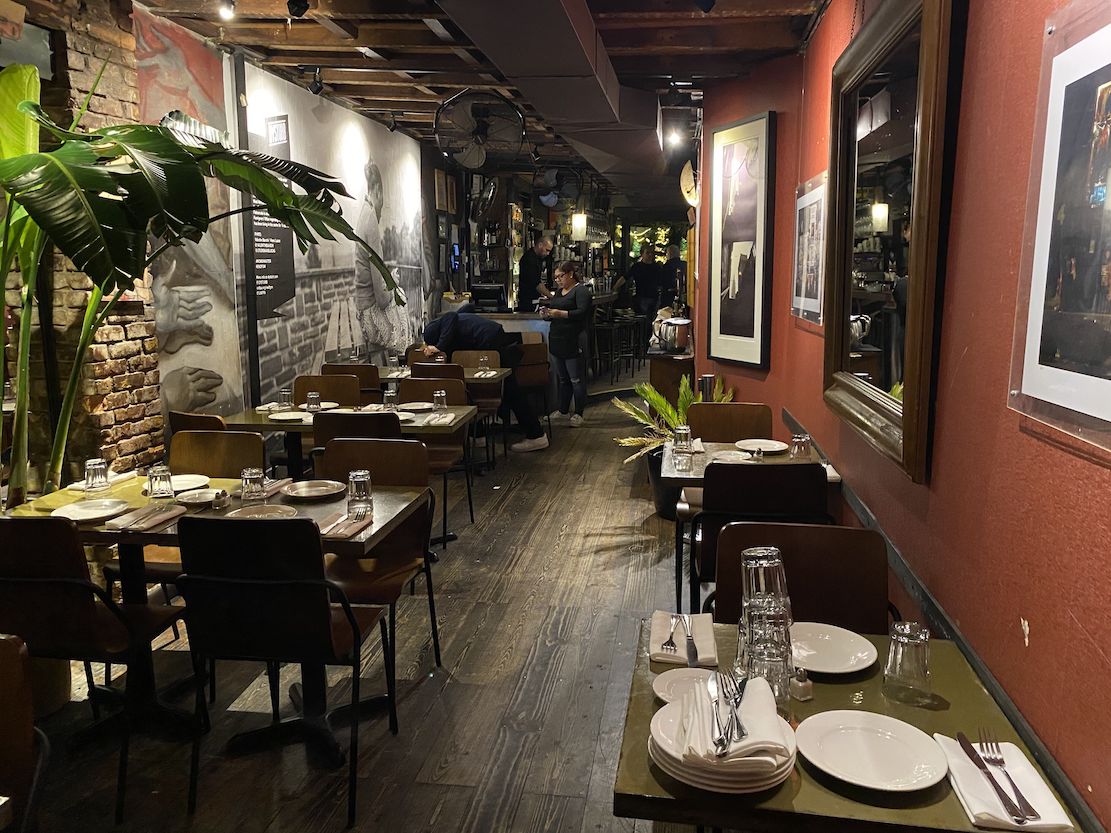
I asked if he ever prepared
that quintessential
Emilia Romagna dish bollito misto—a
boiled mix of meats and vegetables served with its
own broth. Gian Luca sighed,
“No, because we could not do it correctly. We
don’t have the room for the cart
you need to wheel the bollito to the table and
serve it, and it is not a dish
that can ever be served the next day. In Modena it
is cooked and served and
finished the same day.” Which pretty
much sums up Gnocco’s commitment to both
authenticity and integrity in every
dish.
The word gnocco
means “dumpling” as well as being affectionate
slang for “pretty girl,” and
there is a playfulness—call it la dolce
vita, if you wish—about an evening at
Gnocco. The long dining room enters
onto an enclosed garden whose cherry tree will
burst into bloom in a month or
so. The rough brick interior walls are hung with
the work of East Village
artists and photographers, and the lighting is
quite pleasant.
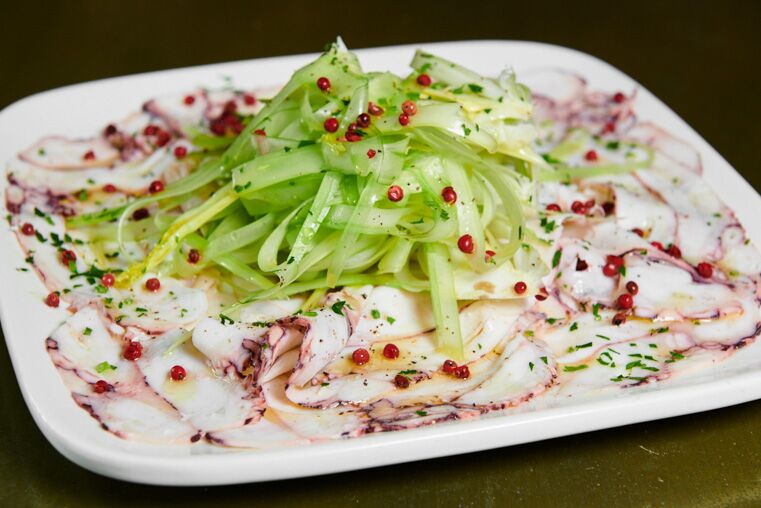 The wonderful new West
Side trattoria Rezdôra
has garnered praise for serving the puffy fried
dumpling called an gnocco,
though Gnocco has been
perfecting them for twenty years. Served
with prosciutto ($17), they would be
seriously addictive were it not for the allure of
the rest of the menu. The
pizzas, crafted by master pizzaiolo
Federico Crociani, have also been perfected,
certainly among the best in New
York, with crackling, yeasty crust and just the
right amount of toppings so as
not to smother it. The one with Speck bacon
and
truffles (below)
is both unusual and very, very good ($22).
The wonderful new West
Side trattoria Rezdôra
has garnered praise for serving the puffy fried
dumpling called an gnocco,
though Gnocco has been
perfecting them for twenty years. Served
with prosciutto ($17), they would be
seriously addictive were it not for the allure of
the rest of the menu. The
pizzas, crafted by master pizzaiolo
Federico Crociani, have also been perfected,
certainly among the best in New
York, with crackling, yeasty crust and just the
right amount of toppings so as
not to smother it. The one with Speck bacon
and
truffles (below)
is both unusual and very, very good ($22).
For
an antipasto
the carpaccio
di polpo (left),a
paper-thin
rendering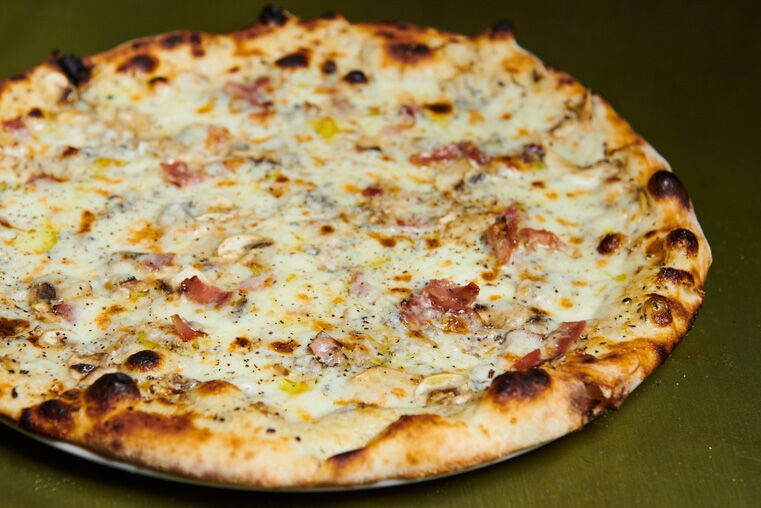 of
octopus bound by its own natural gelatin, served
with pink
peppercorns and a lemon vinaigrette ($16), should
be requisite, for it shows how
carefully this delicate dish must be prepared to
make all textures, tastes and
temperatures work their magic.
of
octopus bound by its own natural gelatin, served
with pink
peppercorns and a lemon vinaigrette ($16), should
be requisite, for it shows how
carefully this delicate dish must be prepared to
make all textures, tastes and
temperatures work their magic.
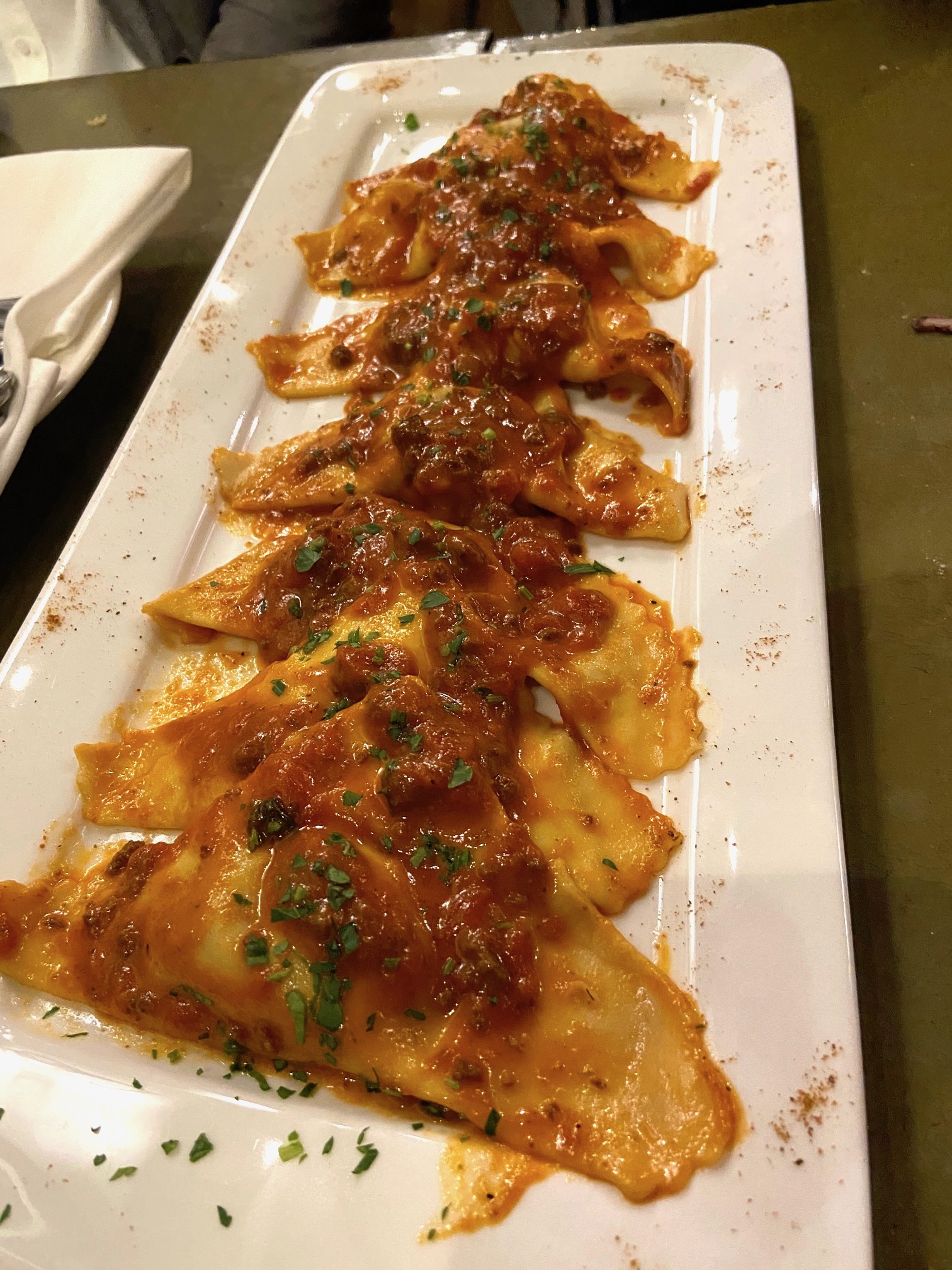 All the
pastas are house-made, from fusilli
piccante with roasted
tomatoes, eggplant,
sweet peppers and guanciale bacon
to
gnocchi with
tomato, buffalo
mozzarella and basil. I was enchanted with a plate
of tortelli ($24.95) stuffed with
pumpkin, Parmigiano, nutmeg and amaretti
cookies and lavished with a beef ragù
(left), and
one of the true specialties is “rosetta”
pasta ($25) folded like a rose and stuffed with
mozzarella di bufala, white truffle,
Parmigiano-Reggiano and Speck.
All the
pastas are house-made, from fusilli
piccante with roasted
tomatoes, eggplant,
sweet peppers and guanciale bacon
to
gnocchi with
tomato, buffalo
mozzarella and basil. I was enchanted with a plate
of tortelli ($24.95) stuffed with
pumpkin, Parmigiano, nutmeg and amaretti
cookies and lavished with a beef ragù
(left), and
one of the true specialties is “rosetta”
pasta ($25) folded like a rose and stuffed with
mozzarella di bufala, white truffle,
Parmigiano-Reggiano and Speck.
Last time I visited Gnocco I
couldn’t manage
even get to the main course, but this time I paced
myself so I could enjoy a
great tour de force—maialino al
latte,
a dish of very 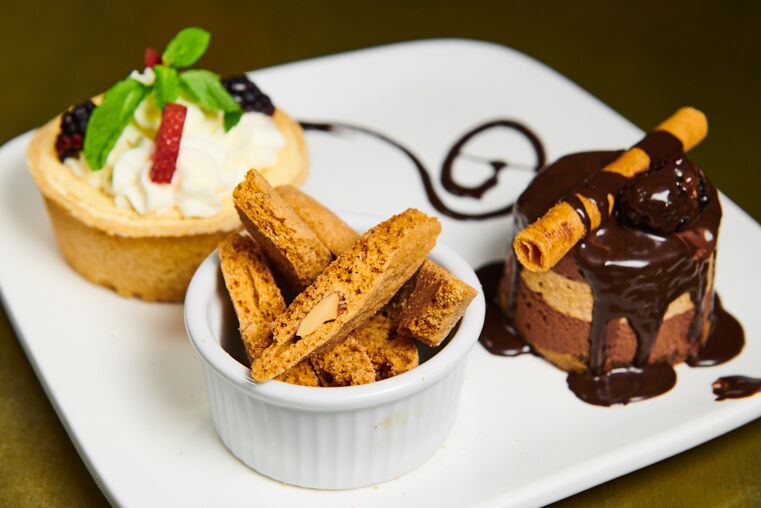 tender,
young pig cooked in milk, seasoned with rosemary
and
served with mashed potatoes and spinach ($25).
tender,
young pig cooked in milk, seasoned with rosemary
and
served with mashed potatoes and spinach ($25).
I struggled to make room for
dessert and was
happy I did: Tiramisù ($9), torta al
cioccolato
($9) and ricotta cheesecake ($9) were
as good as any in town, but the piéce de
resistance—or coup de grace—was a fat calzone
pastry spread with Nutella ($15.95), not
a sophisticated dish, just an irresistible one
made for sharing.
The wine and cocktails are Pier
Luigi’s domain
(there’s a cocktail hour held Sun.-Thurs, when
some cocktails and wine are half
price), and the list is admirably all Italian,
with 60 labels and 55 of them by
the glass.
Gnocco’s
owners believed in the East Village
when it was largely a place most people avoided,
and today it is still a beacon
of good taste and very warm hospitality at a time
when the area has again
become a true New York neighborhood with a lot
more baby strollers in the park
and fewer cop cars in the streets. I’m not going
ever to forget again how good
Gnocco is and right where it belongs.
Open daily for lunch and dinner.
❖❖❖
CHIANTI CLASSICO
By John Mariani
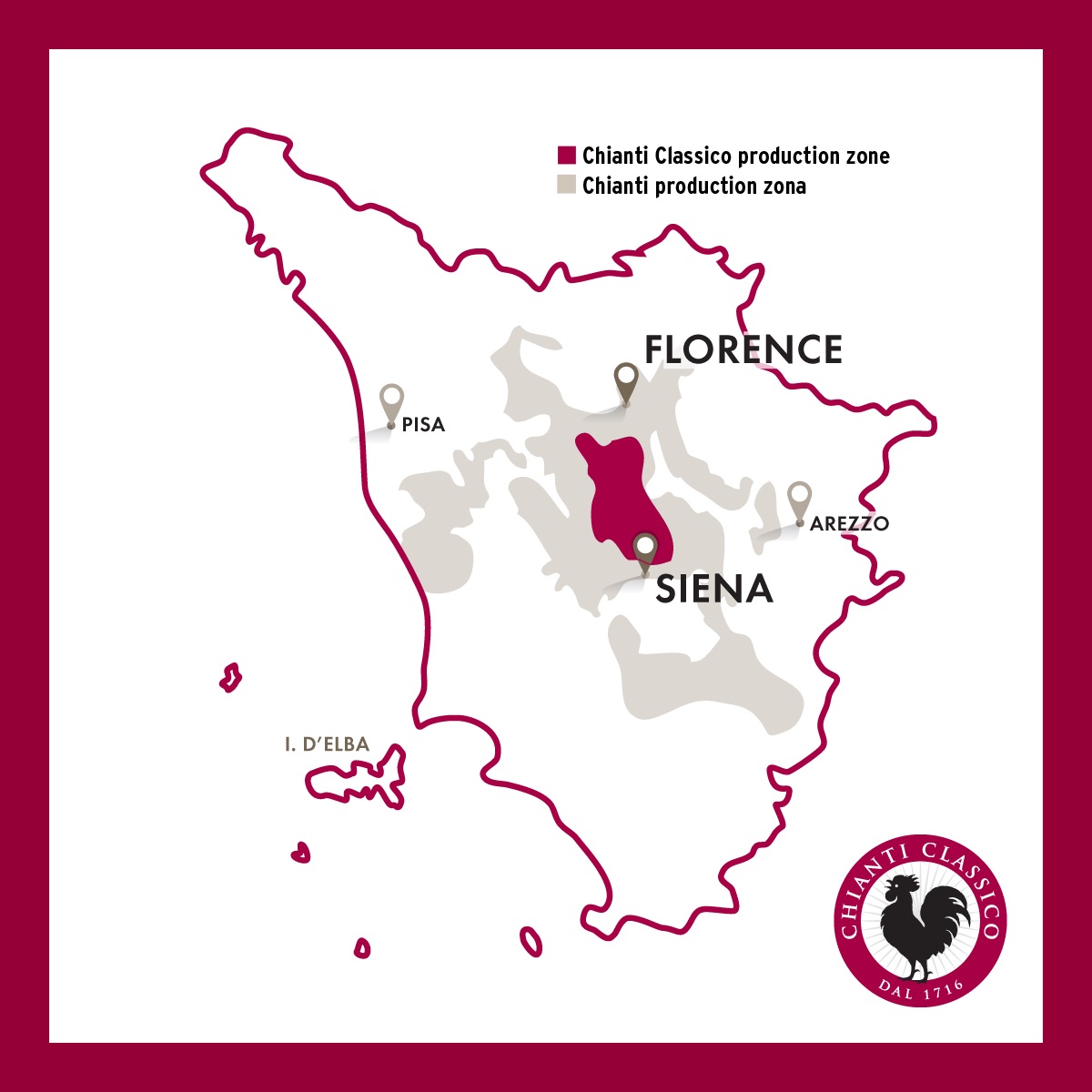
Chianti
Classico, which is
an appellation under Italian wine laws, is a
topographical region distinct from
seven other Chianti zones, which include Colli
Aretini, Colli Fiorentini,
Colline Pisane, Colli Senese, Montalbano,
Montespertoli and Rufina. But it is
the Classico zone that has long been considered
the most distinguished, the
only zone with its own separate DOCG. It has
also been the zone most in the
forefront of Italian viniculture, currently with
more attention and commitment
to sustainability and battling climate change in
Europe.
Last year alone, marking the
300th anniversary vintage of the first official
definition of the production
zone, 24 Chianti Classicos earned the highest
rating of “Three Glasses” from
the food and wine guide Gambero
Rosso. More
than a third of the Touring Club “Vinibuoni
d’Italia” Guide crowns (16 out
of 45) were awarded to Chianti Classicos, and four
wines made it into Wine
Spectator’s Top 100, the
designation with most wines in the international
classifications.
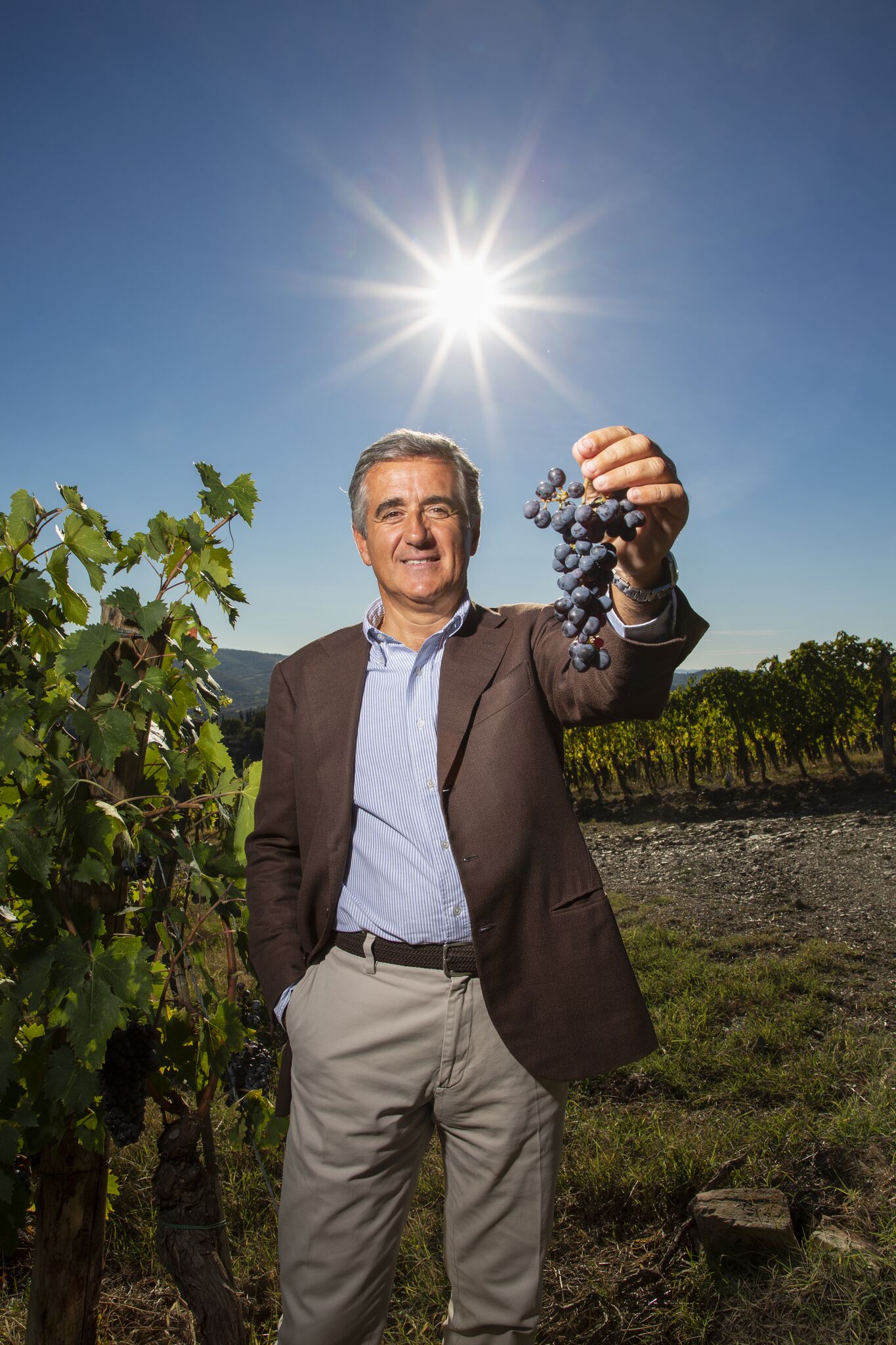 To find out what drives Chianti
Classico producers and to get an
assessment of the 2019 vintage, I interviewed
Giovanni Manetti, chairman of the
Chianti Classico Consortium (left).
To find out what drives Chianti
Classico producers and to get an
assessment of the 2019 vintage, I interviewed
Giovanni Manetti, chairman of the
Chianti Classico Consortium (left).
Q: You report that 2019 “ended on a very positive note for Gallo Nero.” Can you give us some details?
The vintage of 2019 has closed on excellent results for Gallo Nero [Black Rooster] wines with the success of the latest harvest, while 2020 makes an auspicious start. It may still be too soon for a definitive assessment, but the wines destined to become our 2019 Chianti Classicos are expected to be fresh and well-balanced, thanks to the good balance between acidity and tannin, perfectly concentrated texture and excellent aromas. The alcohol content is slightly lower than average compared to previous vintages, in line with the market trends. To summarize, we are looking at an excellent vintage year that will perfectly enhance the characteristic features of the Sangiovese grape and the many facets of such a widely varied area in terms of soil diversity and microclimates.
Another important and positive piece of news is that in 2019 Chianti Classico was crowned by Italian and international critics as one of the best wines in the Bel Paese, offering pleasant surprises to those with the patience to wait for its maturation in the bottle over the next few years.
Rather
than “King of
Tuscany,” the more appropriate title for
Chianti Classico would be “Grand
Duke,” as a tribute to Cosimo III de’ Medici,
whose far-sighted judgment
defined the production zone for today’s Chianti
Classico DOCG back in 1716. The
300th vintage of the Black Rooster region has
enjoyed an extremely appropriate
success.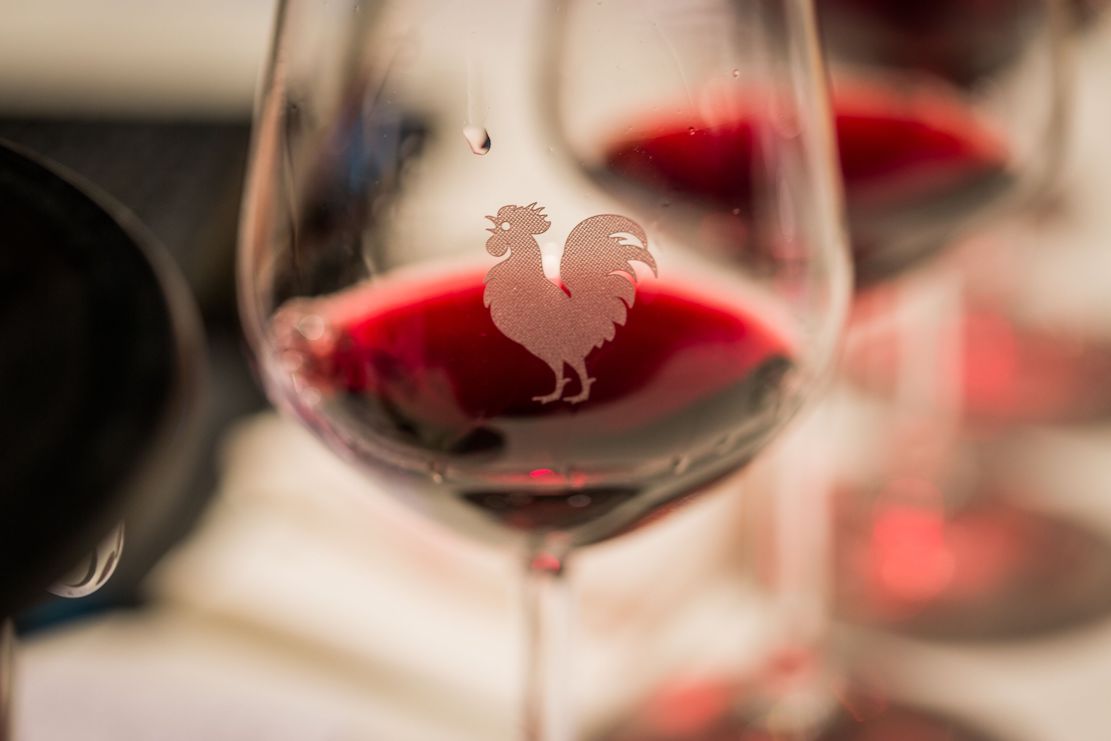
Q: What are the driving forces behind these results?
Chianti Classico is enjoying considerable success. Behind it all is a globally unique terroir, as well as a great deal of hard work, heavy investments and the deepest respect for the environment. In an area that is two-thirds woods, with only a tenth of the acreage planted with vines, 40% of which is now certified organic, Chianti Classico wine producers are increasingly aiming for ecological balance, working to reduce human impact as far as possible. The wine reflects the terroir like a negative photographic image, and this is why preservation of the environmental context and caring for this prestigious product are so important.
Q: You say that “The key word for our 2019 vintage, and to open 2020, is ‘satisfaction.’” Can you explain further?
Satisfaction
means that we
are aware of many positive trends going on in the
Chianti Classico
area. Financially, 2019 was a very positive
year for the designation’s
wines. At the close of business last year, sales
were still slightly higher
than the previous year, and this trend has
continued in January 2020 (+10%
compared with January 2019). Generally speaking,
the overall value of the
designation is increasing, starting with the
grapes: the market price per
quintal from the 2019 harvest was 10% higher than
the previous year, offering
greater profits to grape-growing estates that do
not bottle their
wines.
As far as bottled wines are
concerned, the “premium” types of Chianti
Classico—Riserva and Gran
Selezione—are
also growing in both value and sales volume. In
2019 these two types jointly
accounted for 42% of production and 55% of the
turnover. Gran Selezione performed
particularly well, with a 15% increase in
sales compared to the previous year.
Looking at the Chianti
Classico markets, while we wait and see whether or
not the threat of
import/export taxes will materialize, the USA is
once again the top market, as
it has been for over 15 years: over one-third of
Chianti Classico bottles are
sold in America (34% of total sales); holding
second place is the domestic
market, which currently accounts for 22% of total
Chianti Classico
sales. Next is Canada in third place (10%),
which has proved a very
rewarding market in recent years. With or
without Brexit, the United
Kingdom is a growing market, currently in fourth
place (7%): the Consorzio Vino
Chianti Classico will continue to invest here in
2020 with various events and
promotional activities.
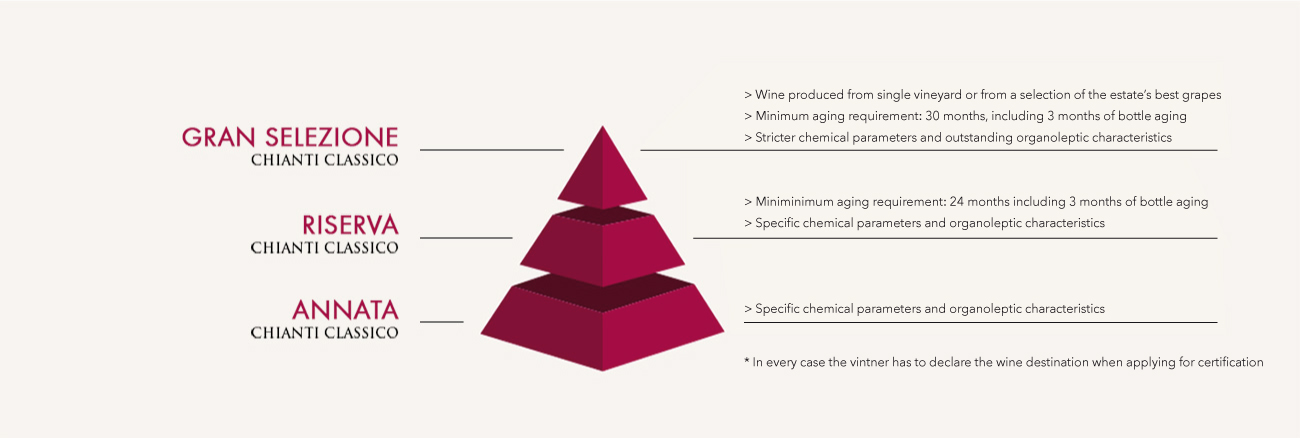
Q: Has the number of producers increased in recent years? Why is this happening?
The number of producers of Chianti Classico has slowly but constantly increased in recent years. Nowadays the members of the Chianti Classico Consortium are 515 vine growers, the majority of them (354), not only grow grapes but vinify and bottle their wines as well. Everybody in Chianti Classico is fully aware that quality means more and more AUTHENTICITY and TERRITORIALITY (terroir driven wines). All the vine growers and winemakers in Chianti Classico are more and more confident in the Sangiovese potential for quality and are optimistic in a further growth of the appellation. Another word that I would like to add to “satisfaction” is “cohesion”: all our vintners are in fact united in considering Chianti Classico not just as one of the oldest appellations of the world but also a very modern wine and projected onto the future.
Q: Can you explain briefly the difference between Chianti Classico and other Chiantis made in Tuscany?
Chianti
and Chianti Classico
are two distinct and separate DOCGs, with two
different sets of production
regulations and above all, with production zones
that are completely separate
and different. The Chianti DOCG is produced in
various zones of Tuscany, a
largest area, which goes from west to east from
the province of Pisa to the
province of Arezzo. Chianti Classico, on the
other hand, is produced in a territory that is
located in the heart of Tuscany
between the cities of Florence to the North and
Siena to the South. It is
composed only by 7,000 hectares of vineyards that
represent less than 15% of
its total surface. The Chianti Classico
appellation is very old, one of
the oldest in the world, in fact dates back to
1716, when the territory had
been delimited, for the first time, by an edict of
the Grand Duke Cosimo III of
the Medici family, fixing the borders of the
production area.
Q: Has the informal marketing term “Super Tuscans” helped or hurt Chianti Classico’s image? Has the term largely been discarded in the industry?
I believe that the
informal marketing term Super Tuscans has never
damaged the Chianti Classico
image. On the contrary it helped to enhance
the reputation of Tuscany as
a region dedicated to the production of wines of
excellence. As you know, Super
Tuscan has never been a legally defined
classification but a term that was
first used in the Seventies. mainly by the
American press, to identify some
outstanding wines that didn’t meet the DOC
standards of the time. The majority
of those wines was coming from the Chianti
Classico production zone. With the
passing of time, the term Super Tuscan has been
more and more used to identify
all the wines that were produced in the region but
outside the recognized DOCs
and DOCGs, and therefore its original meaning of
excellence in quality was
partially diluted. Nowadays it is less used in the
wine industry.
Q: In terms of grape varieties, Chianti once, by law, used varietals, as determined by Baron Ricasoli’s model, like Canaiolo, white Malvasia, Trebbiano and Colorino. Are these still used in Chianti Classico?
Under
the latest production
regulations, Chianti Classico DOCG should be
produced with Sangiovese (minimum
80% up to 100%) and other red varieties (up to
20%). Among the latter, there
are the indigenous ones (e.g.,
Canaiolo, Colorino, Mammolo, Malvasia Nera,
Pugnitello, Foglia Tonda and so
on), and the international ones (e.g.,
Cabernet Sauvignon, Merlot, Cabernet Franc, Syrah,
Petit Verdot and so on), but
we have seen growing use of the indigenous grapes
when Sangiovese is blended.
White grape varieties are not permitted since the
2006 vintage.
Q: How do Italian producers, in particular those of Tuscany and Chianti, regard the problems that would be caused by a 100% tariff, as well as Brexit?
A
100% duty imposed in the
U.S. is to be considered as a kind of sword of
Damocles looming over all
Italian wine and would have devastating effects in
the whole wine industry
sector. This is why all of us were sincerely
pleased to know that the decision
on an eventual imposition of new tariffs has been
postponed at least six
months. As far as Brexit is
concerned, we will see. It is really difficult to
predict its effects: until
now we have only registered an increase in the
volumes of Chianti Classico that
have been sold in the market in 2019.
Q: How are the Chianti Classico producers combating climate change?
As I’ve noted, the respect for the environment and the continuous research for an ecological balance are our best weapons to combat climate changes. More than 40% of the vineyards of Chianti Classico are already certified organic and more than 70% of our estates apply good practices in terms of sustainability in order to avoid soil erosion and to manage water supply. In general, big investments have been done by the Chianti Classico winegrowers both in the vineyards and in the cellars and there is much more professionalism than in the past.
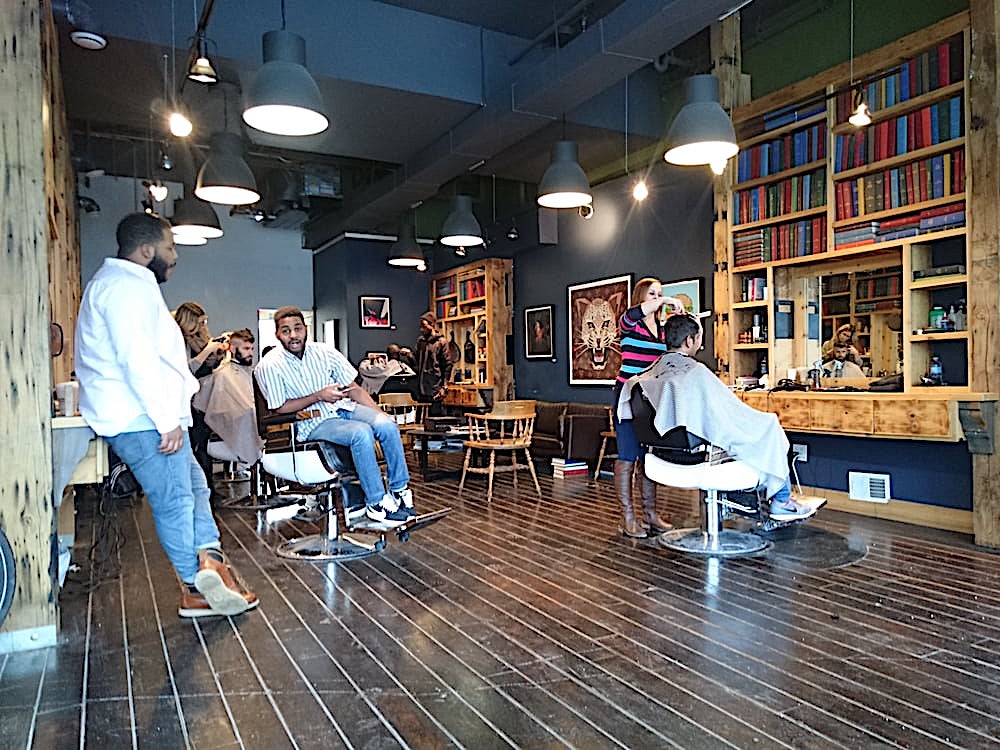 INDEED, WHAT
COULD POSSIBLY
INDEED, WHAT
COULD POSSIBLY
BE MORE GLAMOROUS
THAN A DUALING BARBER SHOP?
“Everything is more
glamorous at The Siren. On the first floor of the
downtown Detroit hotel-cum-jewel box, a barber shop
(left),
with its reclaimed vintage barber chairs and
contemporary finishings, duals as a hub for cultural
conversations.”—Lindsay Green, "Karl’s in The Siren
Hotel Turns the Greasy Spoon up a Notch," Detroit
News
(February 2020).

AS OPPOSED TO. . .
?
"A Wine Bar for the People: Natural wine is thriving in
restaurants and shops in America, but wine bars are
still finding their place" , Eater (2/22/20).
Any of John Mariani's books below may be ordered from amazon.com.
 The Hound in Heaven
(21st Century Lion Books) is a novella, and
for anyone who loves dogs, Christmas, romance,
inspiration, even the supernatural, I hope you'll find
this to be a treasured favorite. The story
concerns how, after a New England teacher, his wife and
their two daughters adopt a stray puppy found in their
barn in northern Maine, their lives seem full of promise.
But when tragedy strikes, their wonderful dog Lazarus and
the spirit of Christmas are the only things that may bring
his master back from the edge of despair.
The Hound in Heaven
(21st Century Lion Books) is a novella, and
for anyone who loves dogs, Christmas, romance,
inspiration, even the supernatural, I hope you'll find
this to be a treasured favorite. The story
concerns how, after a New England teacher, his wife and
their two daughters adopt a stray puppy found in their
barn in northern Maine, their lives seem full of promise.
But when tragedy strikes, their wonderful dog Lazarus and
the spirit of Christmas are the only things that may bring
his master back from the edge of despair. WATCH THE VIDEO!
“What a huge surprise turn this story took! I was completely stunned! I truly enjoyed this book and its message.” – Actress Ali MacGraw
“He had me at Page One. The amount of heart, human insight, soul searching, and deft literary strength that John Mariani pours into this airtight novella is vertigo-inducing. Perhaps ‘wow’ would be the best comment.” – James Dalessandro, author of Bohemian Heart and 1906.
“John Mariani’s Hound in Heaven starts with a well-painted portrayal of an American family, along with the requisite dog. A surprise event flips the action of the novel and captures us for a voyage leading to a hopeful and heart-warming message. A page turning, one sitting read, it’s the perfect antidote for the winter and promotion of holiday celebration.” – Ann Pearlman, author of The Christmas Cookie Club and A Gift for my Sister.
“John Mariani’s concise, achingly beautiful novella pulls a literary rabbit out of a hat – a mash-up of the cosmic and the intimate, the tragic and the heart-warming – a Christmas tale for all ages, and all faiths. Read it to your children, read it to yourself… but read it. Early and often. Highly recommended.” – Jay Bonansinga, New York Times bestselling author of Pinkerton’s War, The Sinking of The Eastland, and The Walking Dead: The Road To Woodbury.
“Amazing things happen when you open your heart to an animal. The Hound in Heaven delivers a powerful story of healing that is forged in the spiritual relationship between a man and his best friend. The book brings a message of hope that can enrich our images of family, love, and loss.” – Dr. Barbara Royal, author of The Royal Treatment.
 |
The Encyclopedia of American Food and Drink by John F. Mariani (Bloomsbury USA, $35) Modesty forbids me to praise my own new book, but let me proudly say that it is an extensive revision of the 4th edition that appeared more than a decade ago, before locavores, molecular cuisine, modernist cuisine, the Food Network and so much more, now included. Word origins have been completely updated, as have per capita consumption and production stats. Most important, for the first time since publication in the 1980s, the book includes more than 100 biographies of Americans who have changed the way we cook, eat and drink -- from Fannie Farmer and Julia Child to Robert Mondavi and Thomas Keller. "This book is amazing! It has entries for everything from `abalone' to `zwieback,' plus more than 500 recipes for classic American dishes and drinks."--Devra First, The Boston Globe. "Much needed in any kitchen library."--Bon Appetit. |
"Eating Italian will never be the same after reading John Mariani's entertaining and savory gastronomical history of the cuisine of Italy and how it won over appetites worldwide. . . . This book is such a tasteful narrative that it will literally make you hungry for Italian food and arouse your appetite for gastronomical history."--Don Oldenburg, USA Today. "Italian
restaurants--some good, some glitzy--far
outnumber their French rivals. Many of
these establishments are zestfully described
in How Italian Food Conquered the World, an
entertaining and fact-filled chronicle by
food-and-wine correspondent John F.
Mariani."--Aram Bakshian Jr., Wall Street
Journal.
"Equal parts
history, sociology, gastronomy, and just
plain fun, How Italian Food Conquered the
World tells the captivating and delicious
story of the (let's face it) everybody's
favorite cuisine with clarity, verve and
more than one surprise."--Colman Andrews,
editorial director of The Daily
Meal.com. "A fantastic and fascinating
read, covering everything from the influence
of Venice's spice trade to the impact of
Italian immigrants in America and the
evolution of alta cucina. This book will
serve as a terrific resource to anyone
interested in the real story of Italian
food."--Mary Ann Esposito, host of PBS-TV's
Ciao
Italia. "John Mariani has written the
definitive history of how Italians won their
way into our hearts, minds, and
stomachs. It's a story of pleasure over
pomp and taste over technique."--Danny Meyer,
owner of NYC restaurants Union Square
Cafe, The Modern, and Maialino.
|
 |
 |
 |
 |
 |
 |
 |
 |
 Everett Potter's Travel Report:
Everett Potter's Travel Report: 
 Eating Las Vegas
JOHN CURTAS has been covering the Las Vegas
food and restaurant scene since 1995. He is
the co-author of EATING LAS VEGAS – The 50
Essential Restaurants (as well as
the author of the Eating Las Vegas web site: www.eatinglasvegas.
He can also be seen every Friday morning as
the “resident foodie” for Wake Up With the
Wagners on KSNV TV (NBC) Channel 3 in
Las Vegas.
Eating Las Vegas
JOHN CURTAS has been covering the Las Vegas
food and restaurant scene since 1995. He is
the co-author of EATING LAS VEGAS – The 50
Essential Restaurants (as well as
the author of the Eating Las Vegas web site: www.eatinglasvegas.
He can also be seen every Friday morning as
the “resident foodie” for Wake Up With the
Wagners on KSNV TV (NBC) Channel 3 in
Las Vegas.
MARIANI'S VIRTUAL GOURMET
NEWSLETTER is published weekly. Publisher: John Mariani. Editor: Walter Bagley. Contributing Writers: Christopher Mariani,
Robert Mariani, Misha Mariani, John A. Curtas, Gerry Dawes, Geoff Kalish and Brian Freedman. Contributing
Photographer: Galina Dargery. Technical
Advisor: Gerry
McLoughlin.
If you wish to subscribe to this
newsletter, please click here: http://www.johnmariani.com/subscribe/index.html
© copyright John Mariani 2020

